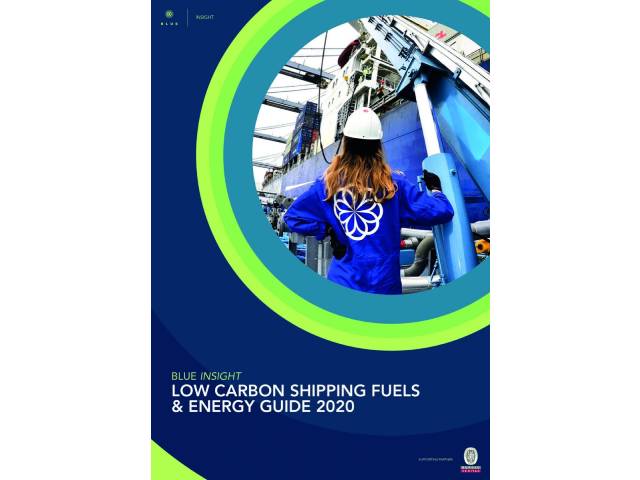A new study from marine and energy consultancy BLUE Insight reveals race to gain first mover advantage in estimated $1.4 trillion low carbon shipping market has already begun
A new study – the BLUE Insight Low Carbon Shipping Fuels & Energy Guide 2020 – has revealed that over 40 organisations are vying for a share of the $1.4 trillion* low carbon shipping fuels and energy market. However, many remain in their infancy and primed for investment from institutional, private equity and private finance. The Guide has been produced by business and strategic advisory consultancy BLUE Insight, in partnership with leading classification society Bureau Veritas.
The Guide includes interviews with representatives from the companies featured, as well as wider research, and a foreward from Dr Tristan Smith – shipping’s leading authority on decarbonisation from UCL’s Energy Institute. Its findings reveal that there are a significant number of initiatives currently in progress, ranging from small, low funded R&D projects to large volumes of low carbon fuels and energy being sold and used to power ocean-going vessels. Launched in early July, the Guide is available to pre-order at:
BLUE Insight’s in-depth qualitative research and analysis explores only fuels and energy with 50% less well-to-wake carbon emissions than conventional fossil fuels, based on current evidence – and demonstrates the seismic shifts the shipping industry will have to undertake to meet its decarbonisation goals.
Fuels and energy covered in the BLUE Insight Guide include ammonia, hydrogen, methanol including dimethyl ether, synthetic and bio-LNG, biofuel, fuel cells, batteries and nuclear. Criteria reviewed by BLUE Insight’s research and analysis teamincludes the profiling of companies, projects and collaborations; finance; lifecycle analysis; maturity of fuel and energy production; scalability; infrastructure analysis and requirements; as well as safety analysis.
Commenting on the findings, Adrian Tolson, Director and Lead, BLUE Insight, said:
“Some might find it surprising that there are so many initiatives and innovations that are already in progress. However, it fundamentally demonstrates – even at this relatively early stage – the scale of the challenge, and the speed of change required to meet shipping’s decarbonisation targets. And it also highlights the commercial opportunities that it will bring, particularly for the finance community looking to invest in sustainable projects.
“Ship owners and operators, and specifically those with the responsibility of developing energy procurement strategies, have a significant task ahead of them. They have to manage the post-IMO 2020 cost and operational challenges, but they also need to start thinking right now about a medium and long-term strategy that enables them to successfully evolve within a decarbonised shipping world; this Guide is designed to give them these insights and intelligence into what new sources of energy are potentially viable to ensure that they can thrive in this transforming market.”
Matthieu de Tugny, President, Bureau Veritas Marine and Energy, added:
“I think that most of us accept that there are potential transition pathways to a decarbonised future for shipping. We need to continue to capture hydrodynamic and other efficiency gains, but our technology focus now, predominantly, is on the fuels and propulsion systems needed to supply the dense energy that ships need.
“The projects and initiatives described in the BLUE Insight Guide demonstrate how we, as an industry, working together, can create the shipping industry of the future – a newer, even more valuable, shipping industry. The world depends on it.”
The IMO has tasked the shipping industry with meeting emissions targets of 40% less CO2 by 2040, and 50% less by 2050, which in real terms requires the industry to reduce carbon emissions by 85% when factoring in trade growth over the next three decades – a transition that is estimated to trigger a $1 trillion investment in creating a new, low carbon marine energy industry, according to experts.









































